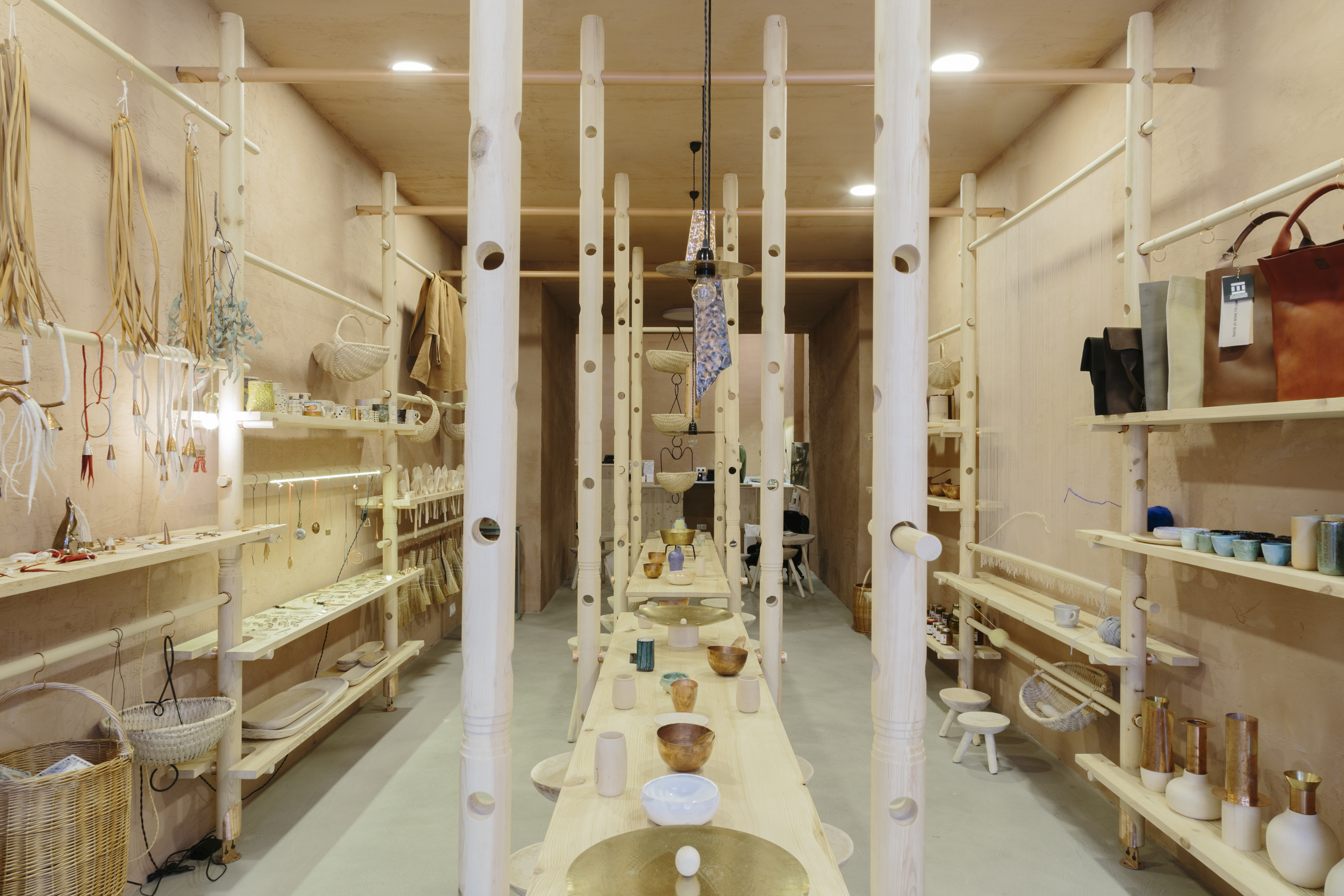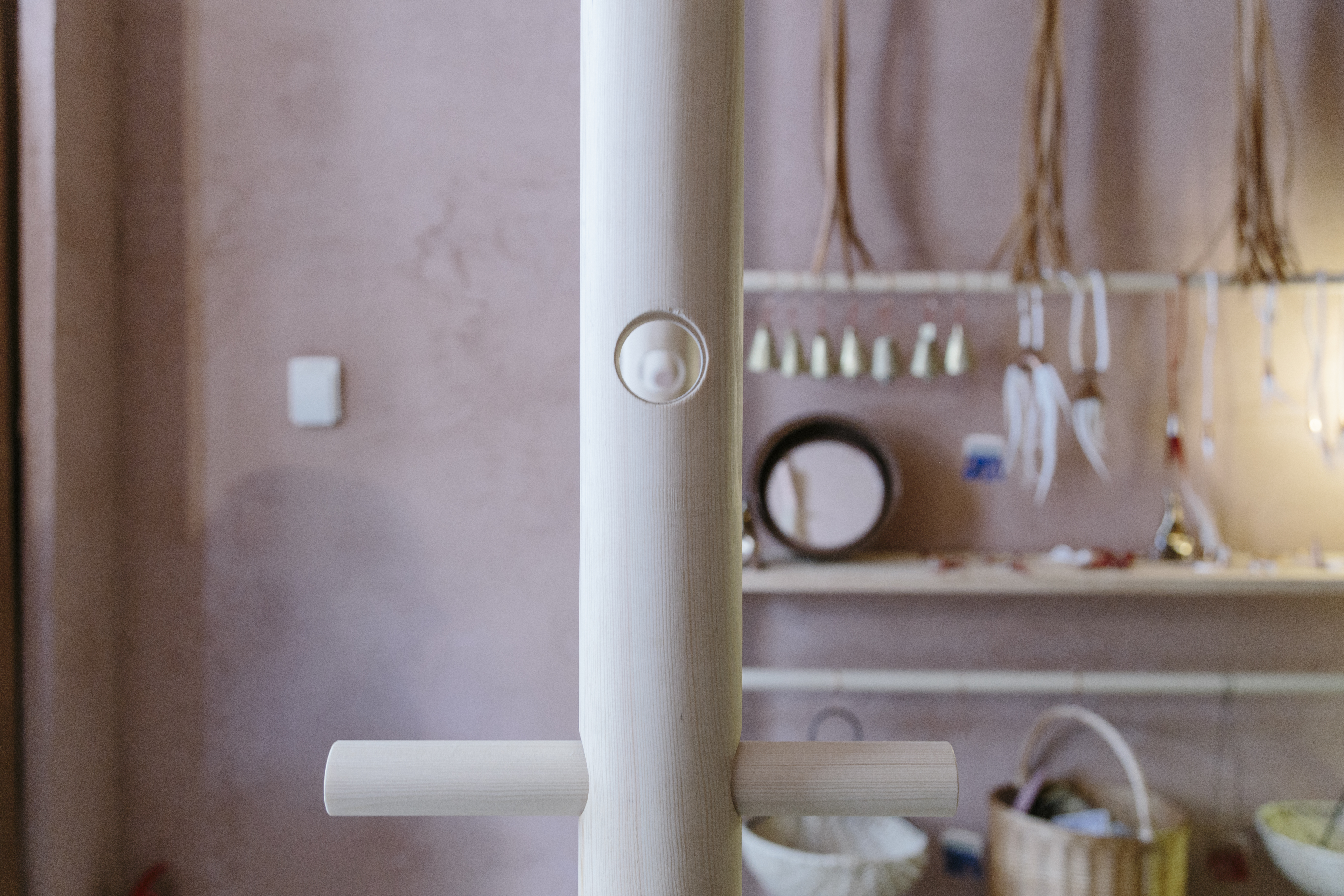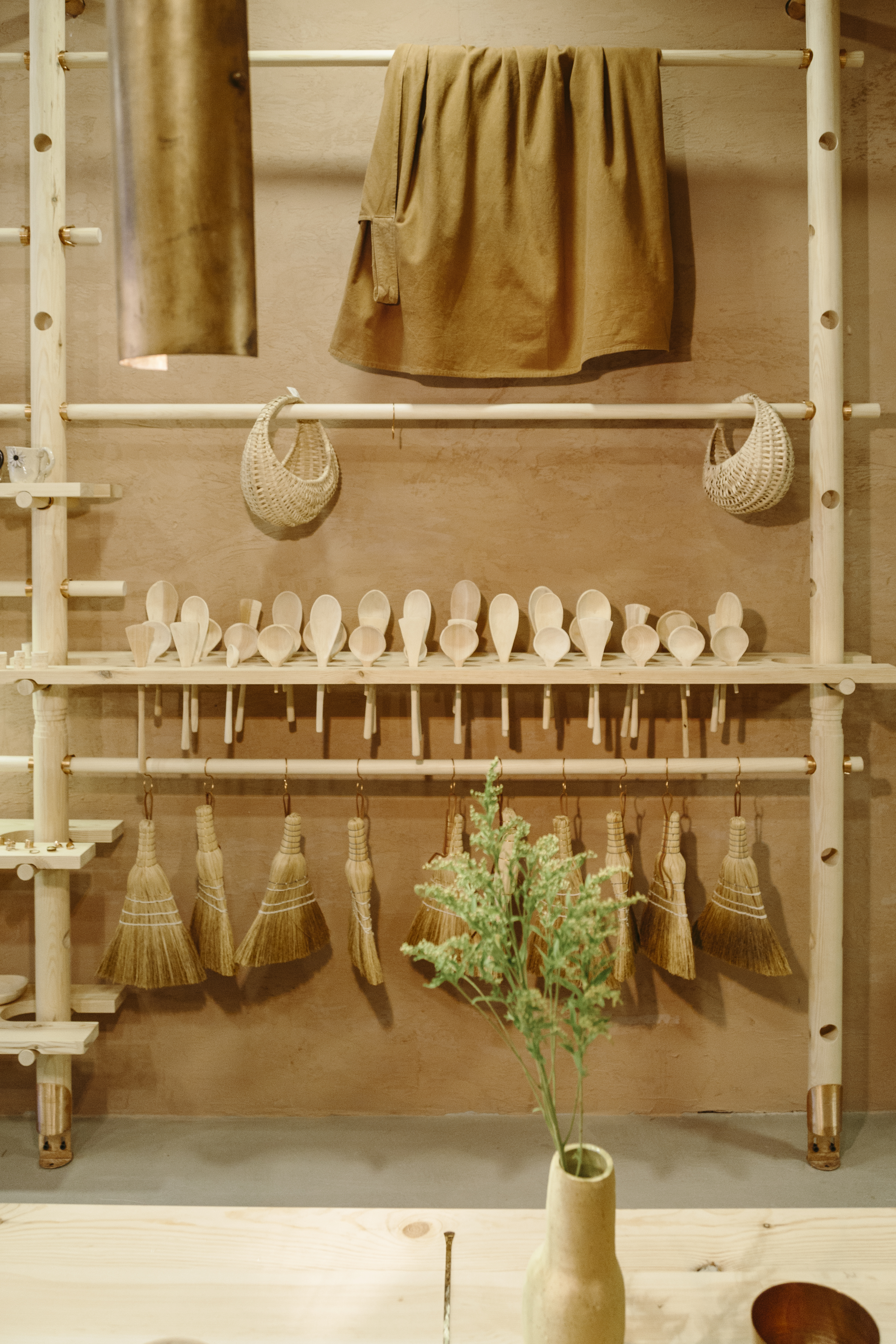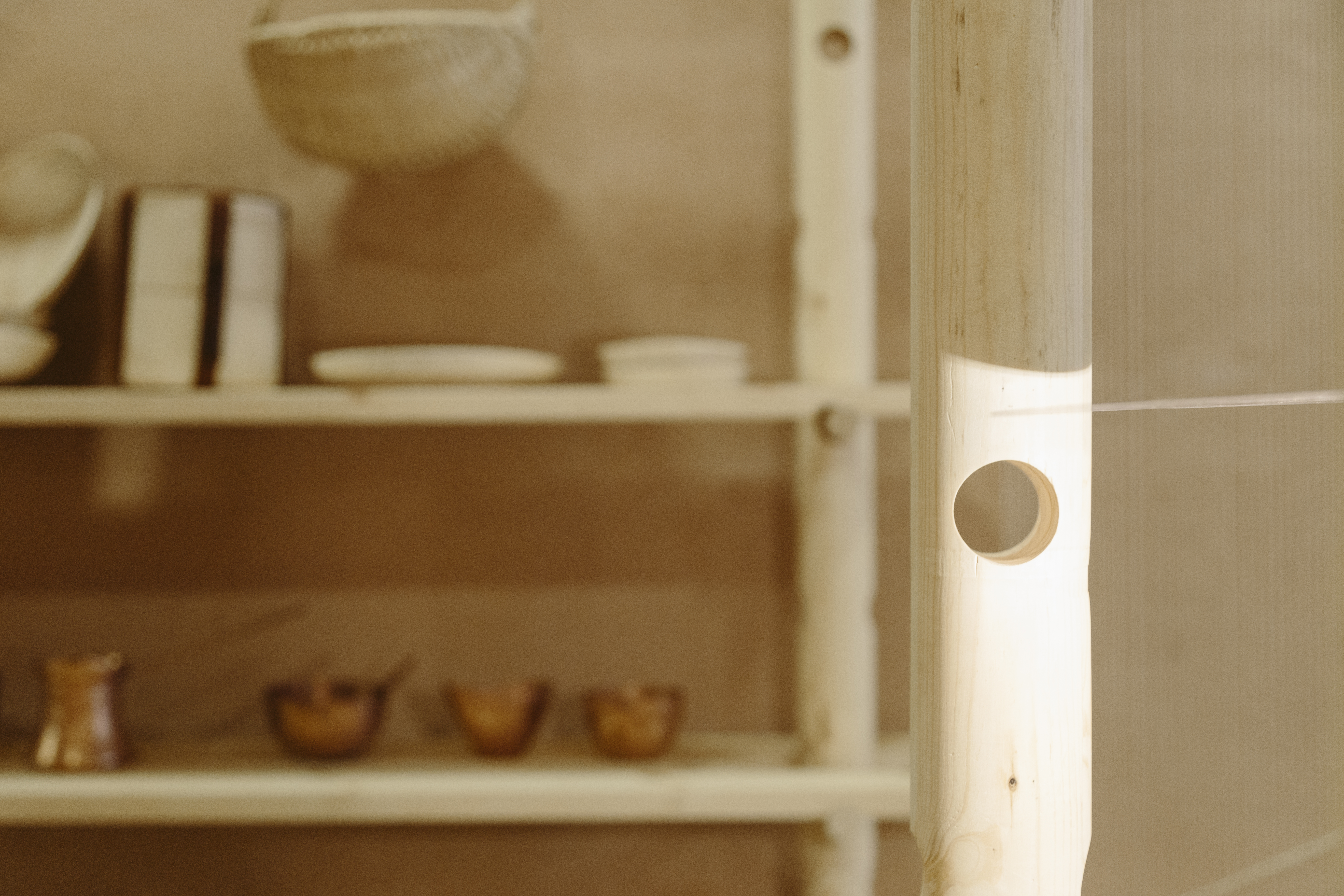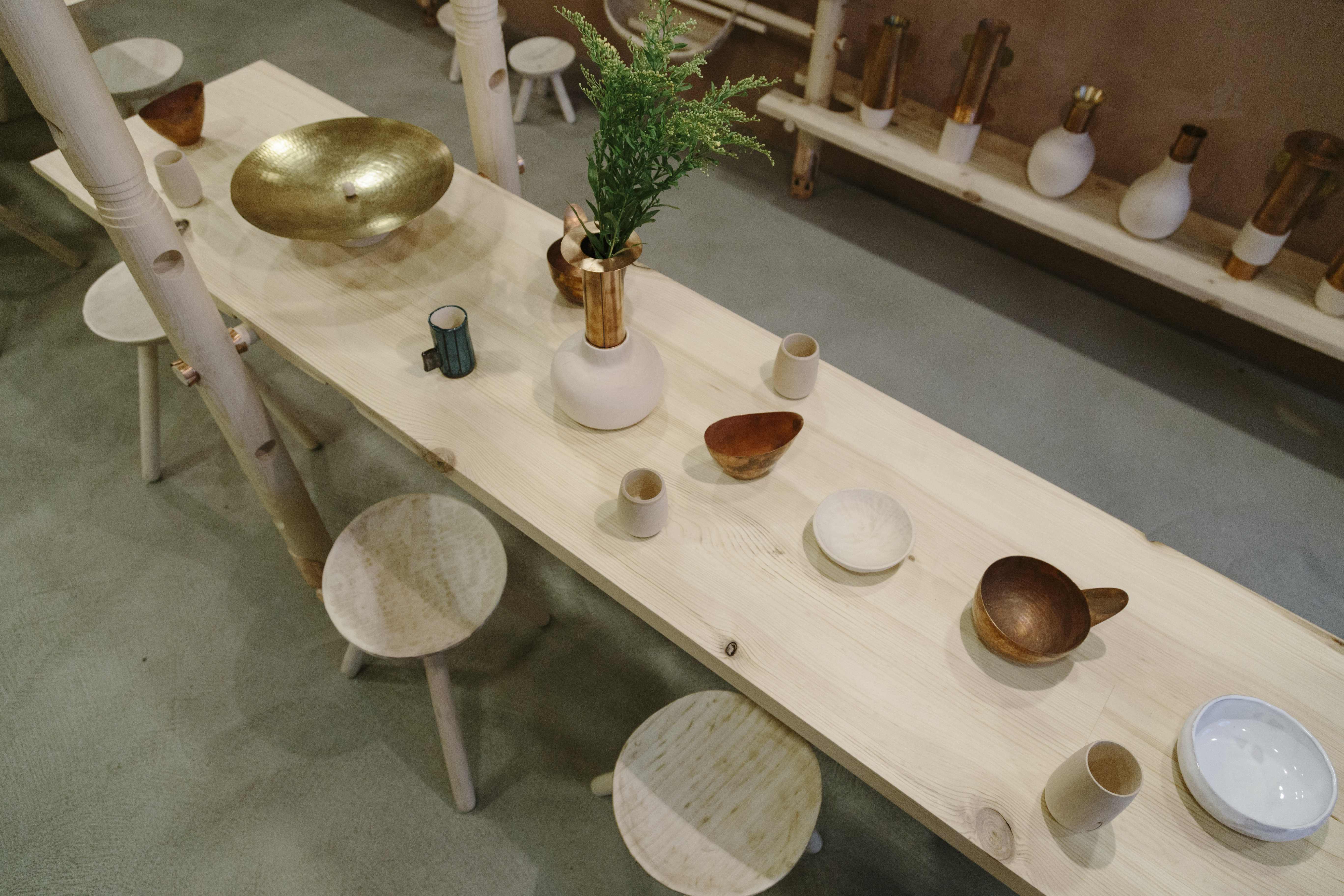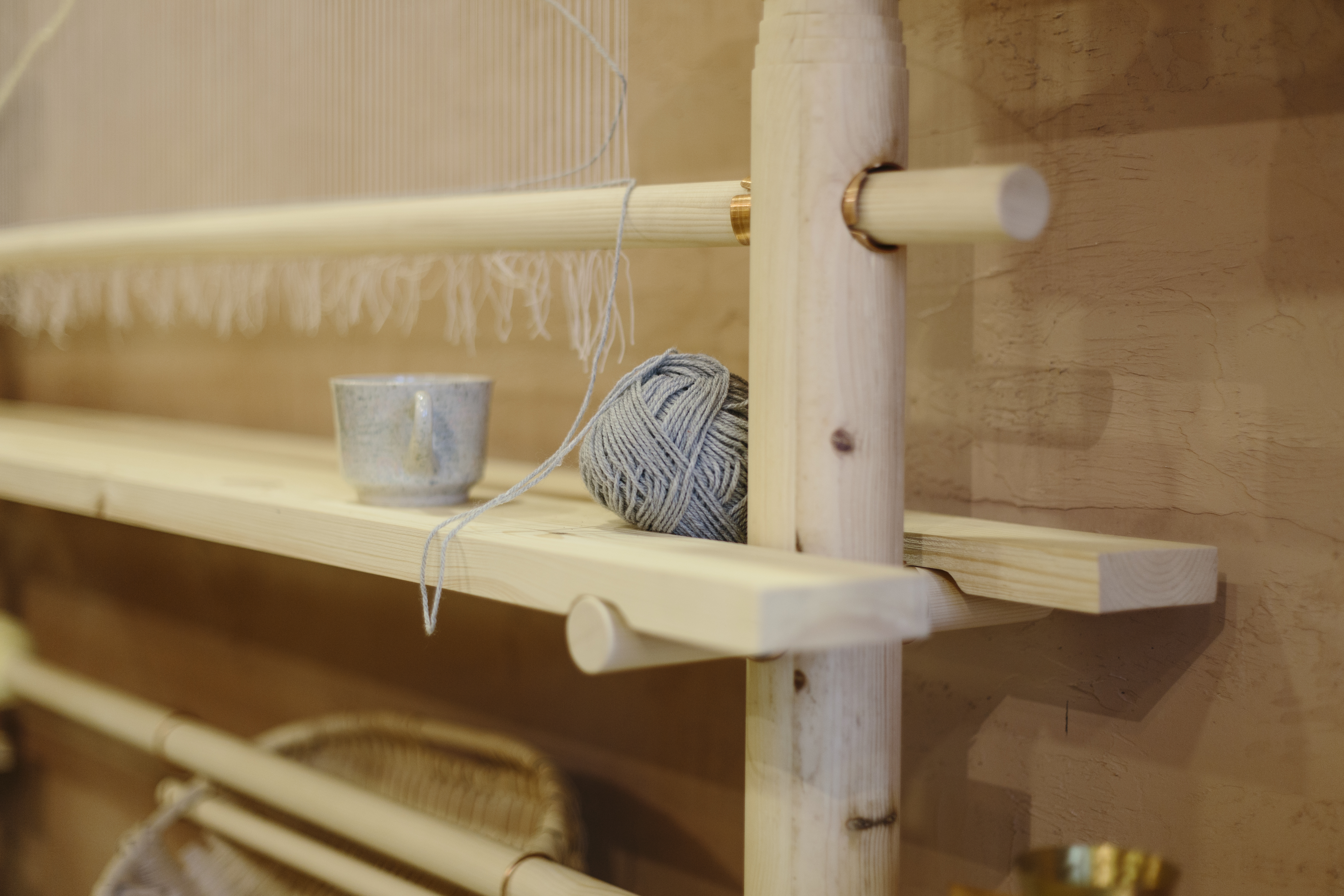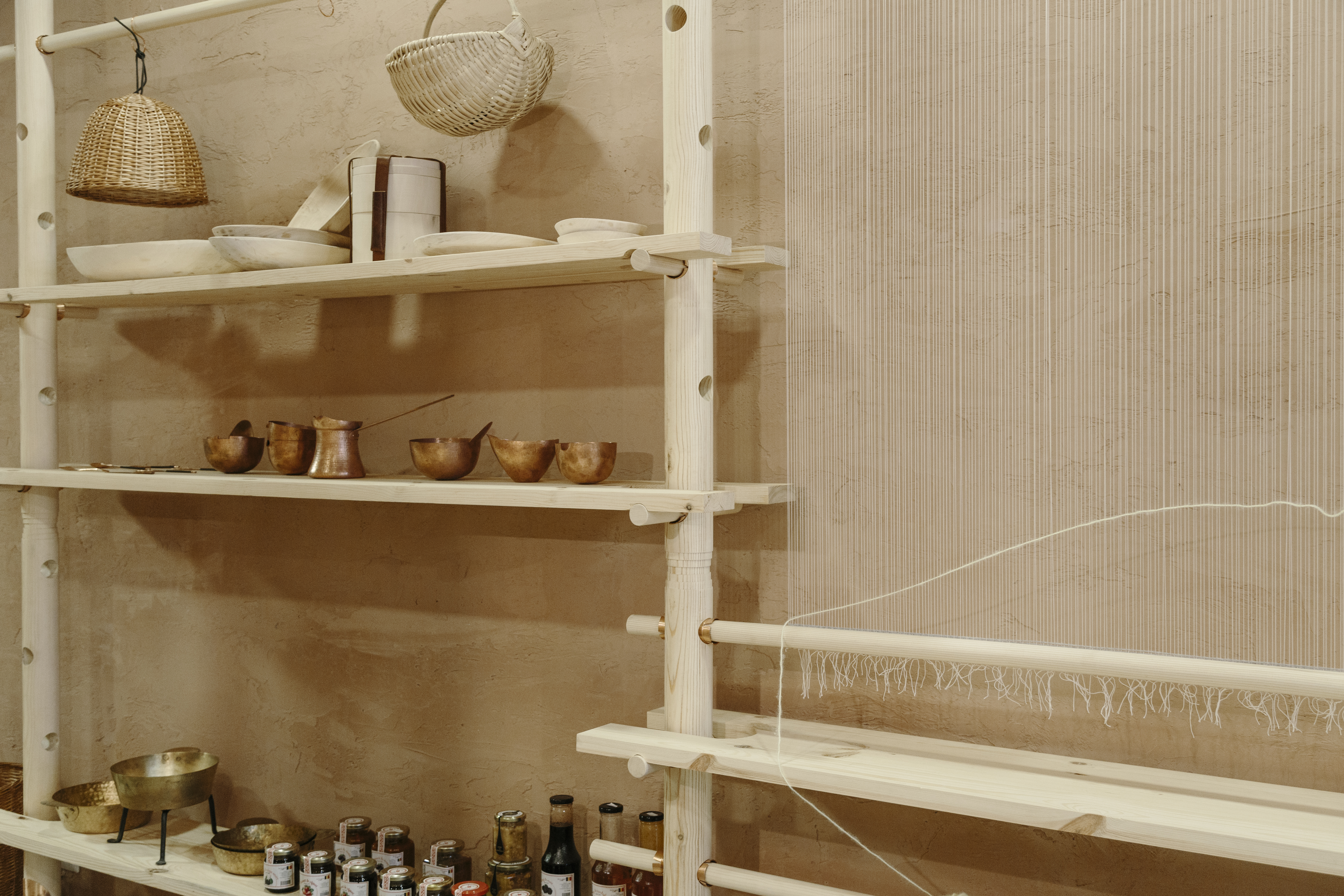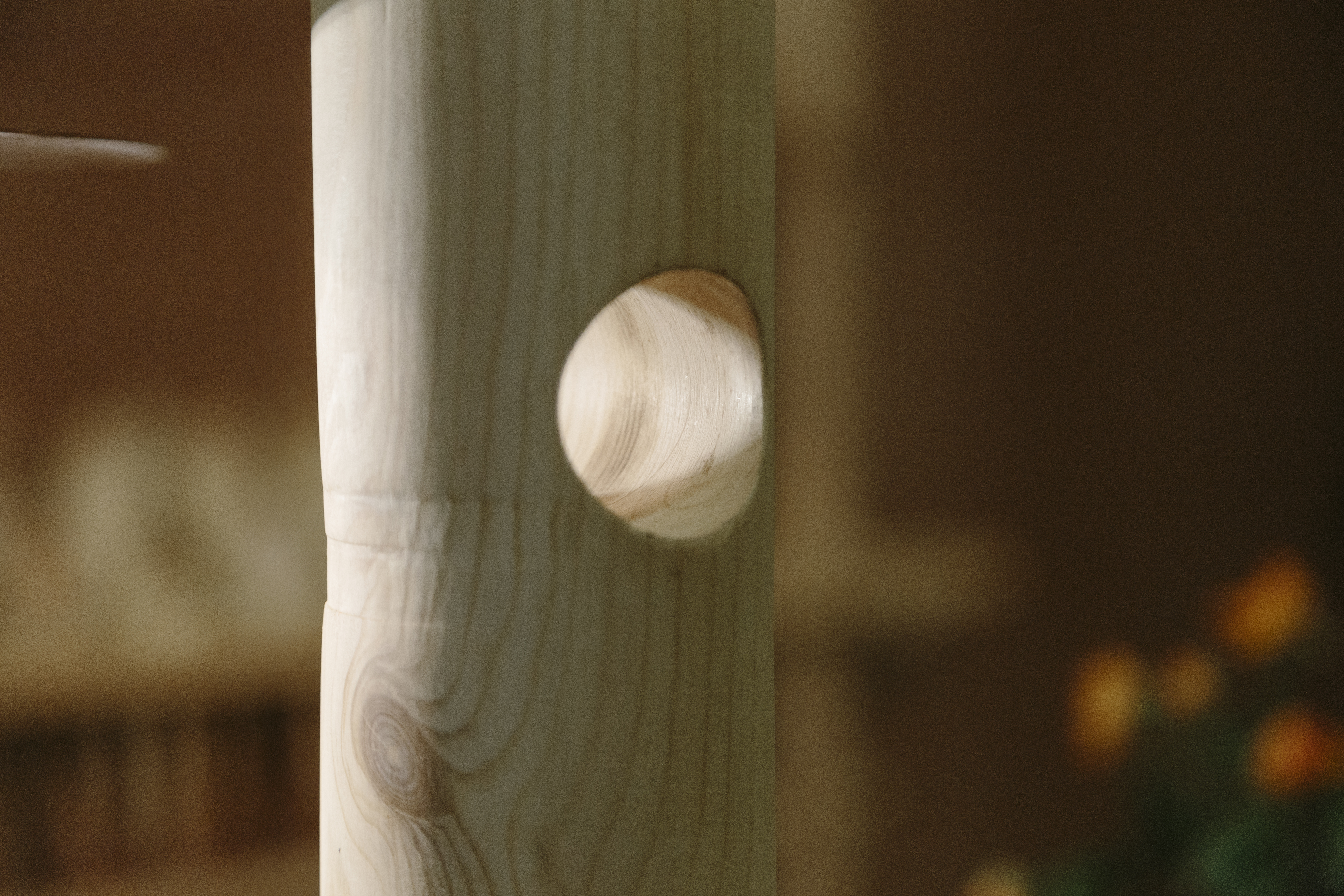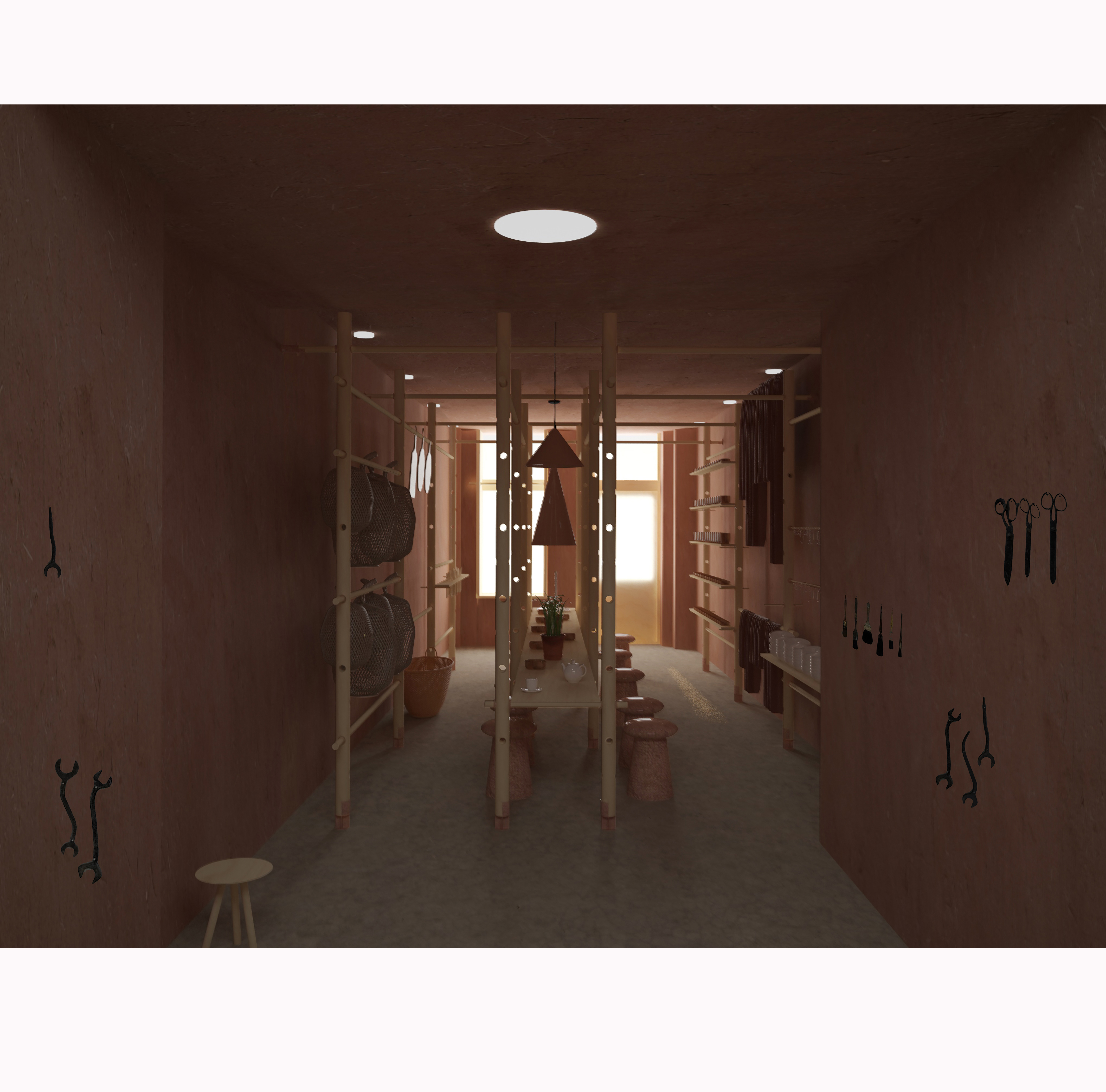THE LOOM
2018-2019
Bucharest
status: built
team: Anca Cioarec, Brîndușa Tudor, Teodora Capră-Robescu, Ștefan Nechita
collaborators: Atelier Vast, Alexandru Dinulescu
photography: Vlad Albu
"The loom" is the winning proposal of the design competition for Mesteshukar Butiq. MBQ is a Bucharest based, non-profit social enterprise that promotes traditional Roma and Romanian craftsmanship. Various collections, from home décor to clothes and jewelry, are created through the joint efforts of artisans and designers and have a story to tell.
The project started with a glimpse of memory:
I remembered the years I have spent with my grandparents. I wouldn't say they were craftsmen, but my grandmother was baking bread, spinning the wool in order to be knitted into our socks and sweaters, or she was weaving baskets for her own use. When I think of her, I don't remember the way the basket looked in the end, nor the bread or the socks, but I can still feel in my fingers the point of the spindle and the low sound of the wool while becoming a thread. I can feel so clearly passing my fingers through the vertical twigs of the basket, I remember some of them being soft and flexible, and others breaking, I can feel the flour on her hands and the ferm movements through the bread dough.
I remember with my hands.
While talking about crafts you end up inevitably talking about remembering. Distant memories, the joy of recovering them and the fear of loosing them, along with the ones vaguely describing them, like an old, kind dream.
But somehow, these memories don't seem to be stocked in my brain, but moreover in my fingers, arms. They are triggered by touch. The body remembers.
To recollect the experience of certain crafts means remembering the process. The body reacts when it sees the tools, or the materials. The man remembered what his parents were doing with osier while sitting with it, touching it and trying to work with it.
A place that aims to keep the crafts alive should be able to trigger memories, to have the tools and the materia available, to invite you to take a seat and let your fingers move along with them. To be a workshop, more than a shop.
To be a tactile house of past and future memories.
We have envisioned a long, central table, where one could either see and touch objects, or even make ones while being guided through a workshop, or just read about people and their crafts while drinking a coffee. Experiencing this place should make you feel like being in a loom.
A tool-space.
At the same time we felt the need for a more quiet, less exposed place, where a craftsman can sit on his small chair while passing his knowledge to some apprentices. Its walls must embody the traces of hands and the silhouettes of tools and materials that are waiting to become something else. Only tactile walls and a small chair. We imagine the process of finishing this wall as a collective event involving people from all social layers that Mestesukar Boutique aims to bring together: craftsmen, designers, students, potential clients and other actors of the phenomenon of crafts recovering.
For the exhibition of the final products we proposed a flexible structure, able to be reformulated for different types of objects, different proportions or scenarios, giving the shop the freedom to change in time the selections and the focus of its curricula. It is a simple linden structure made of flute-columns waiting for their beams that can support either shelves or hooks. The assembly will use handmade copper joints.
And in order to be able to leave the shop for different events like fairs or temporary showcases we proposed a small scale-object that reproduces the shop’s structure and exhibition area along with its table. We called it Mesteshukar-Mobil.
The window shop can either host an exhibition of a product or just a coffee/reading moment of a visitor.

